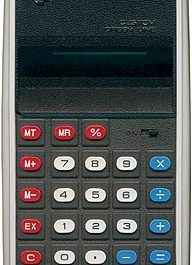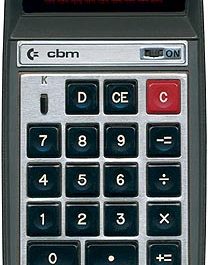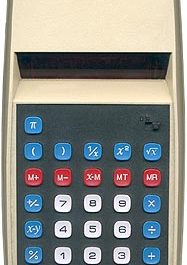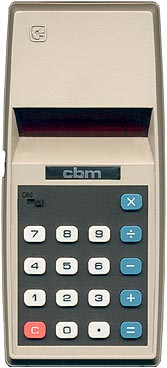
The Commodore 784D calculator, introduced in the mid-1970s, is a testament to the technological advancements of its time, offering a blend of functionality and aesthetic design that was characteristic of Commodore products. This calculator, manufactured in the United Kingdom, is notable for its distinctive appearance and unique features, despite some limitations in its logic system.
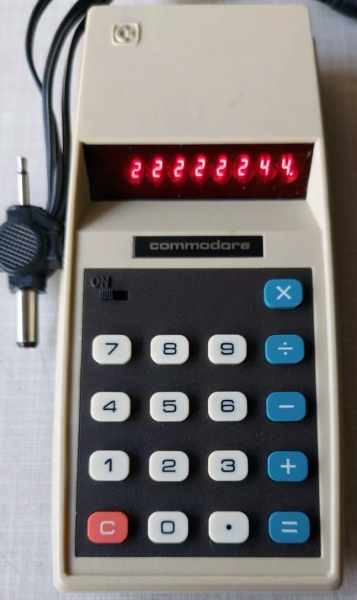
The Commodore 784D is encased in a beige and dark brown matt plastic two-piece case, with a matt black keyboard surround. The keys are typical of Commodore’s design, featuring bright, wobbly, and squishy buttons that provide positive feedback when pressed. The display is an 8-digit red bubble-lens LED, with a ninth digit reserved for error and negative signs. A heavily inset sloping red flat plastic display filter ensures a clean display, although the viewing angle is somewhat limited. The calculator’s dimensions are approximately 64mm (width) x 137mm (height) x 23mm (depth), and it weighs 84 grams excluding batteries.

Powered by a 9.0V DC PP3 size battery, the Commodore 784D also accepts an adapter (No. 505 or DC-620R) through a socket on the left-hand side. It is important to remove the battery before using an adapter to prevent potential damage. The calculator’s tall, slim shape was a common design for many early Commodore calculators, primarily to accommodate the bulk of the battery at the top.
The Commodore 784D offers standard four-function capabilities, but its logic system is notably flawed. Despite this, the calculator’s bold three-color button system and the slightly enhanced red LED display, where each line is made up of several small dots, contribute to its appeal. The original case is a soft black mottled plastic with a flip-over top cover and popper closing, featuring an embossed Commodore logo on the front.
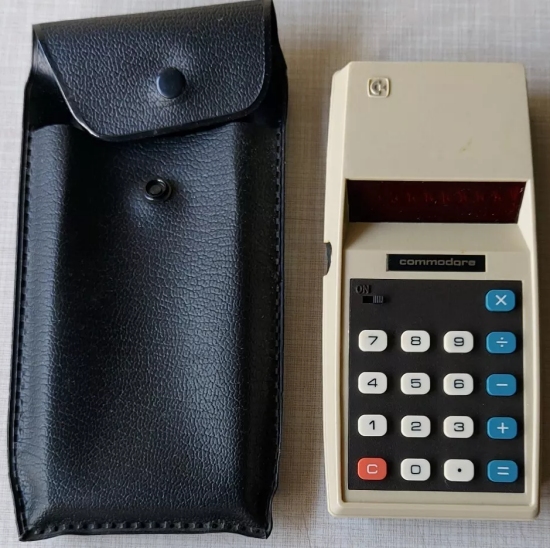
Logic
- (C) is used once to cancel the last number entered and a second time to clear the whole calculator, functioning as a C/CE button.
- Automatic constant is available on all four functions.
- Input overflow is suppressed; inputting a ninth digit is ignored.
- Negative numbers are shown with a “-” in the immediate left-hand digit, traveling into the far left (ninth) to allow eight-digit negative numbers.
- Divide by zero shows “E00000000” (no decimal point) and is recoverable by dividing by one.
- Overflow shows the result with “E” (negative or positive) in the leftmost (ninth) digit and is recoverable by continual division by 10 (or a multiple). The maximum number you can recover from is x1048 as you can carry on using the overflow number.
- (EX) is used to exchange the display with the register.
- The (%) button divides by 100 and can also be used to recover from overflows.
- It suffers the negative zero bug: (0)(-)(1)(=) gives “-1” then (+)(1)(=) will give “-0.”
- It suffers the divide to negative zero bug: (0)(-)(1)(=) gives “-1” then (/)(1)(0)(=)(=)(=)… etc will eventually result in “-0.”
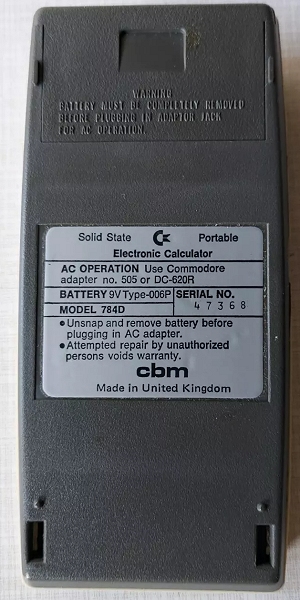
Summary
The Commodore 784D calculator, despite its logical shortcomings, is a notable piece of technology from the 1970s. Its distinctive design, including the bold three-color button system and the enhanced red LED display, makes it a visually appealing device. The calculator’s standard four-function capabilities and unique features, such as the ability to recover from overflows and divide by zero errors, highlight its innovative aspects. However, the presence of bugs, such as the negative zero and divide to negative zero bugs, underscores the limitations of its logic system. Overall, the Commodore 784D stands as a fascinating artifact of the early days of electronic calculators, showcasing both the advancements and the challenges of the era.
